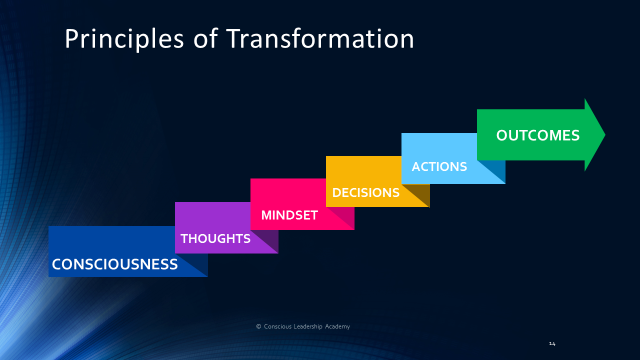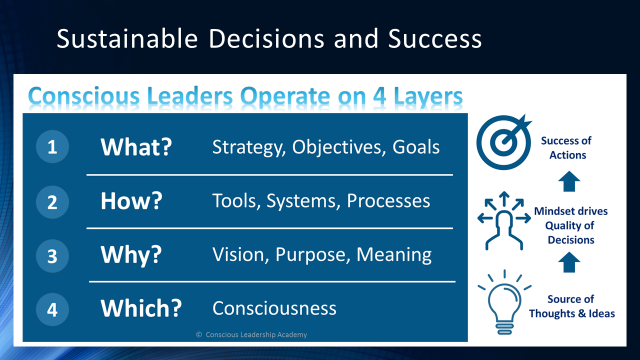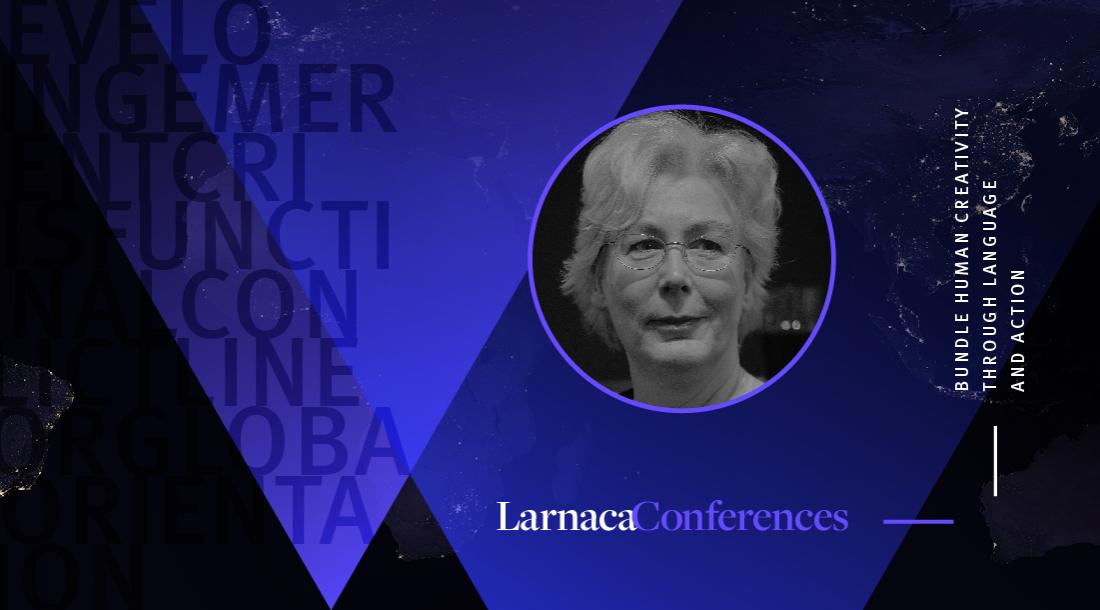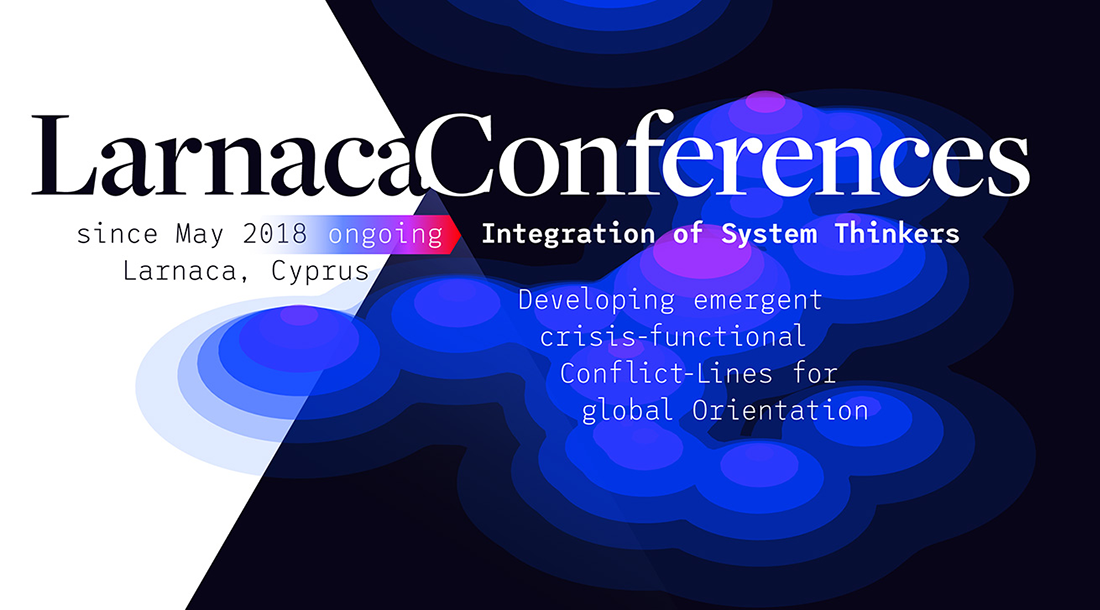Leadership in Crisis

When I was asked to talk about this topic, I was a bit irritated at first. How was this title meant? It triggered at least two questions in me:
• Do we have a leadership crisis? or
• What does leadership look like during a crisis?
Why not look at both? Let me please take you on a special exploration journey.
First, we will investigate if we are having a Leadership Crisis at all.
1. Do we have a Leadership Crisis?
What is a Leadership Crisis?
I would say, we would probably have a real leadership crises, when most of our leaders would be failing in their jobs. Societies and organizations are exchanging their top leaders when they are not delivering as expected and promised. This means, in most cases we are judging the quality of “leadership” by the delivered outcome.
Therefore let us explore what our leaders have done over the past decades. What did they achieve?
According to World Bank data [1], our leaders increased the World’s GDP by factor 8, from the 1960s until today. So we definitely can say that our leaders have created massive wealth. Well done!
This triggers the next question in me: Who is benefiting from this great wealth?
Let us take a look at the Global Wealth Report 2019 [2]: 44% of the Global Wealth are owned by less than 1% of the Global adult population. More than 80% of the total wealth is owned by around 10% of all adults. And I bet that all people who are reading these lines, probably belong to this category. We are the privileged ones! On the other hand, the lowest 57% of all adults, just own 2% of the Global Wealth. Please pause for a moment and digest these numbers.
What do they tell us?
My personal view is, that this unbalanced wealth distribution is a potential time bomb for social riots. Many large refugee flows across the Globe are just one indicator of this risk.
Let us move on to the next burning question: How many resources are leaders using to create this enormous wealth?
All economic growth is based on an increasing demand of goods and services. All necessary resources we are getting from a single source, the third planet of this solar system. Lucky us! Let us find out what the impact of our current way of living is?
We find some eye opening answers in the Global Footprint Network National Accounts 2018 report [3]. If all people on this planet would live like people in the USA, we would need five times our planet Earth, to provide all necessary resources.
If you are European and just smiling now about your consuming friends across the Atlantic, you should know that European countries are not much better and need around three Earths to maintain the European way of life.
Hope may arise that our resource-devouring behavior in the Western World could be counterbalanced by the less industrial countries in the world. But forget about it. The report tells us, that even the world’s current average way of living is consuming resources of 1.7 planets.
Every kid understands that we consume far more resources per year than the Earth can renew. So it looks like we are exploiting our own home and even our own future. How long will we be able to continue this? Certainly not for very much longer. This outlook seems to be the next time bomb.
So far the achievements have not been sustainable, but we could guess that at least human beings, as the dominant species on this Earth, would benefit from them. Is this assumption right?
Looking at data from UN and WHO, we find astonishing answers:
• Every year, approximately 4 million people die through air pollution - and this is just air pollution. [4]
• Every year, 9 million people die of hunger and 854 million people are undernourished, despite we waste 1.3 billion tonnes of food, which is one third of all food produced for human consumption. [5]
• Every year, 264 million people suffer from depression. [6]
• Every year, 800,000 people commit suicide [7] and it is estimated that the suicide attempt rate is 11 times higher. Suicide is even the third leading cause of death among 15 to 19 year olds [7]. To me, this looks like the young generation cannot see a future worth living anymore.
The above lines make it very clear that humanity is mainly suffering from how we are creating wealth. How about other inhabitants of this planet?
The statistics are not getting better. According to Raj Sisodia [8], we already lost 80% of all natural forests, 90% of large mammals and 95% of large fishes.
We are not only harming ourselves, we are also harming all other life forms on this planet. If we also take into account the fast approaching climate change, we definitely could say that the way we are producing this great wealth today, seems to be a disaster.
All the discovered consequences of current leadership are indicating that most of our leaders have indeed failed, maybe not according to their job description, but according to their responsibilities as great leaders in taking care for people, society and planet.
The solutions of the past have turned into the problems of today!
Let me be very clear, the problem is NOT that most leaders focus on making profit. Every company needs to make money, otherwise you are out of business pretty soon.
From my perspective, the problem is that most leaders regard economy, society & environment as three separate systems.
Most business leaders believe that they are only accountable to their shareholders. Most political leaders focus only on society and what they need to do to get re-elected. Often we just rely only on a few activists to remind us constantly to protect our environment.
But if we look at it from a more holistic point of view, we recognize that our economy is at the heart of our society. The Business World needs skilled workers and people in our society need work and both can only survive when we have a healthy environment. We urgently need to understand that we are living in ONE complex interdependent system!
What we need is a shift from a “ME-centric” world view to a “WE-oriented” world view. Today most Leaders aspire to be the best IN the world, but what we need are leaders who are the best FOR the world. Leaders should be able to think in complex Global systems and be able to successfully navigate through an uncertain and unpredictable future.
So far, so good, but how prepared are leaders today for the many challenges of the VUCA World?
Lectica Inc. has assessed many business leaders to check their capability to handle this ever-increasing complexity [9]. Guess what they discovered? Their findings also reflect my personal experience as a leader, consultant and trainer. The higher you climb in the hierarchy, the less time you spend on training and personal growth. The gap between the rapidly growing job requirements and the capabilities leaders bring to the table to handle complexity, is widening. The biggest "complexity gap" was therefore discovered among executives.
Other researchers like Torbert [10] and Joiner [11] found that only 5 – 7 % of all leaders have the mental, emotional and social capabilities to successfully lead through complex system changes.
Looking at what leaders have achieved and caused in the past decades, and their ability to handle the new VUCA challenges successfully in a sustainable way, leads to my conclusion:
Yes, we have a serious leadership crisis! Maybe the biggest we ever had in the history of mankind?
The burning question for me now is whether there is a way out of this crisis?
2. How to lead during a crises?
Our friend Albert Einstein coined a very famous quote: “We cannot solve our problems with the same thinking we used, when we created them!”
This is obviously very true, isn’t it? But how do we do that? How do we think differently?
To answer this question, I would like to share a concept which we developed at our Conscious Leadership Academy, “The Principle of Transformation”.
Today, so many transformation programs are not delivering the desired outcomes. Different sources share different statistics, but all agree on pretty high failure rates like 70% [12] and 84% [13]. What is going wrong here?
Let us dive deeper into the short summary of the concept.
When do we regard a transformation as successful?
When it delivers the expected different outcome. To achieve a different outcome, we need to act differently. To perform different actions, we need to take different decisions. To arrive at different decisions, we need to have a different mindset. To create a different mindset, we need to have different thoughts. And where do our thoughts come from? Thoughts arise in our Consciousness!

Most leaders mainly focus on results and actions during their transformation programs. This is like scratching on the surface. As long as we are not addressing the root cause - our state of consciousness - we will not significantly increase the success rate of our transformation programs.
To make it totally clear, your actual consciousness state determines if you are taking wise decisions and perform sustainable actions, or not!
How does this work?
This is a book-filling topic in itself, so I try a shortcut. According to O&O Academy [14] we only live in two states of consciousness:
• A “stress state” in which we suffer from confusion, anger, fear etc. or
• A “wellbeing state” in which we feel calm, happy, loving, grateful etc.
To understand the impact of these two consciousness states, we need to take a look at our brain.
The Prefrontal Cortex, located at our forehead, is the home of our intelligence, empathy and meaning making. The Limbic System is responsible for our emotions. The so called Reptilian Brain, located at the back of the head, supports our survival by reacting to threats with fast and automatic reflexes.
Some Researchers at the University College London created an experiment in which they were scanning the brain in the two different states. [15] Our Brain does not distinguish between reality and a game. So the scientists simply asked the participants to play a game and their only task was to win, while measuring their brain activities. What they found was, if the player was successfully following the own winning strategy in a calm state, the energy was detected in the prefrontal cortex. This indicates that the participant had access to his full intelligence and acted accordingly. When the player was under pressure to “lose life” in the game, the energy moved to the reptilian brain at the back of the head. This indicates that in threatening situations, all actions and decisions are based on automatic reactions and instinct, rather than creative intelligence.
That means, at the moment we need it most, our brain loses access to full intelligence and switches to an autopilot based on past experiences. Thousands of years ago this was a smart creation by nature, when humans were constantly facing life threatening events. The likelihood to get killed in the office is not very high these days. But our brain unfortunately still reacts in the same way when we face psychological threats, like not meeting our targets or deadlines.
I think most of us have already experienced the quality of decisions and actions made in fear. Leaders normally focus on creating task forces to act immediately. Nothing wrong with it, as long as the people in the task force are not experiencing stress or fear.
So far, we understood that during a challenge in a crisis, it is extremely important to be aware of your state of consciousness. If you are in stress-state, make sure that you do not take any decisions until you moved back to calm courage. In a well-being state, we have the capability to look at the bigger picture and we could see business, society and planet as one system. This will lead to sustainable solutions.
This is exactly the reason why the most successful leaders, operate across 4 different layers.
Most business schools are teaching only about Layer 1, the “what” and Layer 2 the “how” and forget about the other two. No wonder our current leaders are only strong in these skills.

Simon Sinek made the “why” popular. This third layer is an important one, because it creates the necessary energy to stay on course during a crisis, by following an inspiring vision and purpose.
The most important layer is layer 4, simply because it is the source of all your ideas and thoughts. I am sure you would like to access your full intelligence and activate your full creative potential. So before you are looking for innovative solutions, taking important decisions or wanting to perform at your best, please check on yourself: “Which” consciousness state am I operating from?
3. First Practical Steps To Grow As A Leader
The journey to evolve into a more integral consciousness, takes time and practice. This learning process is called vertical development and this is exactly how we empower leaders at our conscious leadership academy. Let us get more practical now and by starting with the very first lesson.
EXERCISE 1: From which state of consciousness do you operate most of the day?
• Get a blank sheet and draw a line in the middle. On one side you write the headline STRESS, on the other side the headline is: WELLBEING
• Please install a timer App e.g. mind bell, on your smartphone to remind you randomly throughout your day.
• Every time you hear the beep, please pause and reflect “In which state am I right NOW, in this moment?” and add a mark on the relevant side of your sheet.
• The easiest way to identify your current state is to ask yourself: “Am I happy right NOW? Do I feel appreciation, gratitude or love?” If not, then you are in the stress state.
• Be clear there is no neutral state. We have just accepted some emotions e.g. irritation as normal, because we got so used to them. These emotions are less intense, so we tend to ignore them. We just believe we feel neutral, but our brain cells have a different view on this.
• At the end of the day count the marks on your sheet and find out in which state you spent most of the time of the day.
You cannot change what you are not aware of. Therefore the first step is the most important step to grow as an individual and a leader. Become more and more aware from which consciousness state you are currently operating from.
You might now say, it is certainly nice to be aware that I am in a stress state, but how do I move out of it?
EXERCISE 2: How to switch from stress to calm courage?
Serenity is one of the less intense wellbeing states. So it is a great start to switch your consciousness state in a few minutes.
In India at O&O Academy we learned the “The Serene Mind Practice”. For me it is one of the most effective ways to shift the state in just 3 mins. I even practiced it during meeting breaks on a “quiet little restroom” in the office.
An audio record of this practice is available on https://www.breathingroom.com or the associated App.
If you practice the following steps over and over again, this will re-program your habitual thought patterns:
• Sit up straight and close your eyes, or direct them to a fixed point in front of you.
• Consciously take 3 deep breaths.
• Recognise the exact emotion which is arising in you now.
• Observe the direction of your thinking. Are you in the past, the future or the present moment? Just observe, do not try to change it.
• Visualize or feel a tiny flame between your eyebrows.
• Imagine how the flame slowly moves into the middle of your brain
• Hold the attention on the flame for a few moments
• Open your eyes with a smile
Please do not listen to your mind when it tells you something like “this is too simple, that will never work!” I also ignored this practice for a long time, until it saved me in an emergency case. Give it a try, practice daily and you will see results pretty soon!
4. Conclusions
We first investigated if we are having a leadership crises at all. By looking at the positive and destructive achievements of our political and business leaders over the past decades, it became very obvious that we are probably having the biggest and most dangerous leadership crisis in the history of humanity.
It will take the best in all of us to overcome and survive this crises. Especially when we understand that only very few leaders today are capable to successfully navigate in the VUCA environment in a sustainable way. Lucky you, when you have one of them in your organization.
Then we looked into how each of us could contribute by improving our personal leadership during this crises. We explored the impact of our consciousness states on the quality of our ideas, decisions and outcomes. In a suffering state we activate our inner autopilot to react very fast, but unfortunately without having access to our creative intelligence. Only when we are in a wellbeing-state, like a calm courage, we are able to use our full intelligence and see the bigger picture of the three interdependent systems of economy, society and planet.
We can only change what we are aware of. So we shared two basic practices to discover which state you operate from most of the day and what you could do to switch the state.
Instead of striving for being the best in the world, we should be the best for the world.
If you are one of those leaders who are ready to transform, but do not have the time or opportunity to do so, I also have good news for you. Please follow the advice of Tenzin Gyatso, the 14th Dalai Lama: “Our prime purpose in this life is to help others. If you can't help them, at least don't hurt them".
References:
1. https://www.worldbank.org/
2. https://www.credit-suisse.com/about-us/en/reports-research/global-wealth-report.html
3. https://www.footprintnetwork.org/
4. https://www.who.int/health-topics/air-pollution
5. https://www.npr.org/sections/coronavirus-live-updates/2020/05/05/850470436/u-n-warns-number-of-people-starving-to-death-could-double-amid-pandemic?t=1622018363531
6. https://www.who.int/news-room/fact-sheets/detail/depression
7. https://www.who.int/news-room/fact-sheets/detail/suicide
8. Raj Sisodia, Professor of Global Business at Babson College in his talk “The Healing Organization” at the Conscious Capitalism European Conference 23rd of September 2019 in Berlin, Germany
9. https://theo-dawson.medium.com/how-to-bridge-the-complexity-gap-8fdc9d4c8b92
10. David Rooke and William R. Torbert - “Seven Transformations of Leadership”, Harvard Business Review, April 2005
11. Joiner, B., and Josephs, S. – “Leadership agility: Five levels of mastery for anticipating and initiating change”, Jossey-Bass, 2007
12. https://www.mckinsey.com/business-functions/transformation/our-insights/why-do-most-transformations-fail-a-conversation-with-harry-robinson
13. https://www.forbes.com/sites/brucerogers/2016/01/07/why-84-of-companies-fail-at-digital-transformation/?sh=74477219397b
14. Preethaji and Krishnaji, Founders O&O Academy in “The four sacred secrets”, Penguin, 2019
15. Dean Mobbs, Predrag Petrovic, “When Fear Is Near: Threat Imminence Elicits Prefrontal-Periaqueductal Gray Shifts in Humans”, Science Vol 317, August 2007

is an international Key Note Speaker, Trainer and Coach for conscious leadership. He is an inspiring facilitator to establish values-driven organisational cultures. Jan was many years part of the senior leadership team of an international ICT company. As a visionary Leader, Mentor and Coach in an ever changing multicultural environment, he inspired his people to develop several award winning innovations. During the past 10 years he acquired a vast knowledge of psychology, quantum physics and neuroscience. The question, what these insights mean in our everyday life, was driving his passion into self-development and the growth of consciousness. He is delighted about having found a way to achieve great business results with a human leadership style. To share his fulfilling insights with as many people as possible, he developed together with Regina Brand the Conscious Leadership approach.




